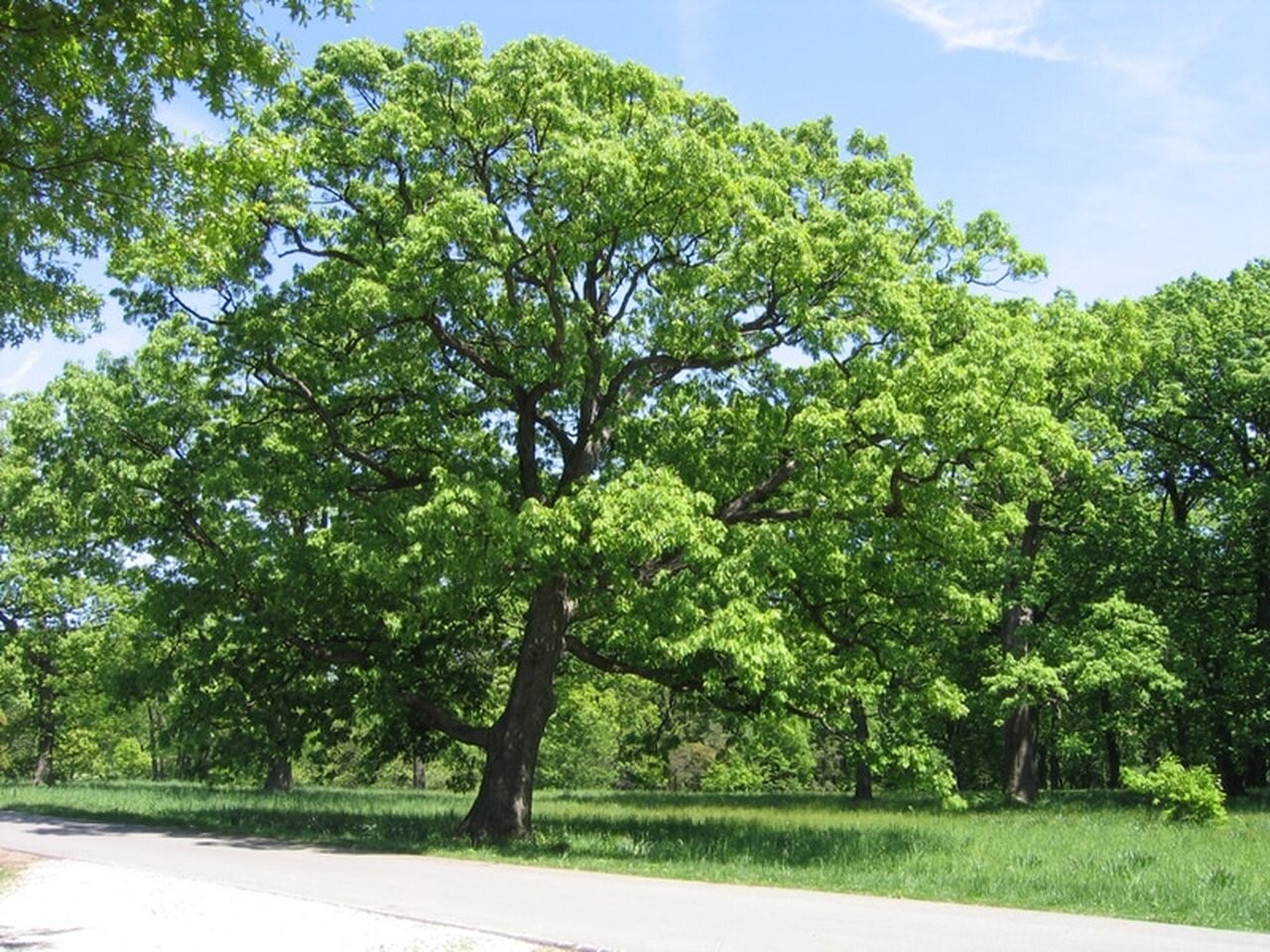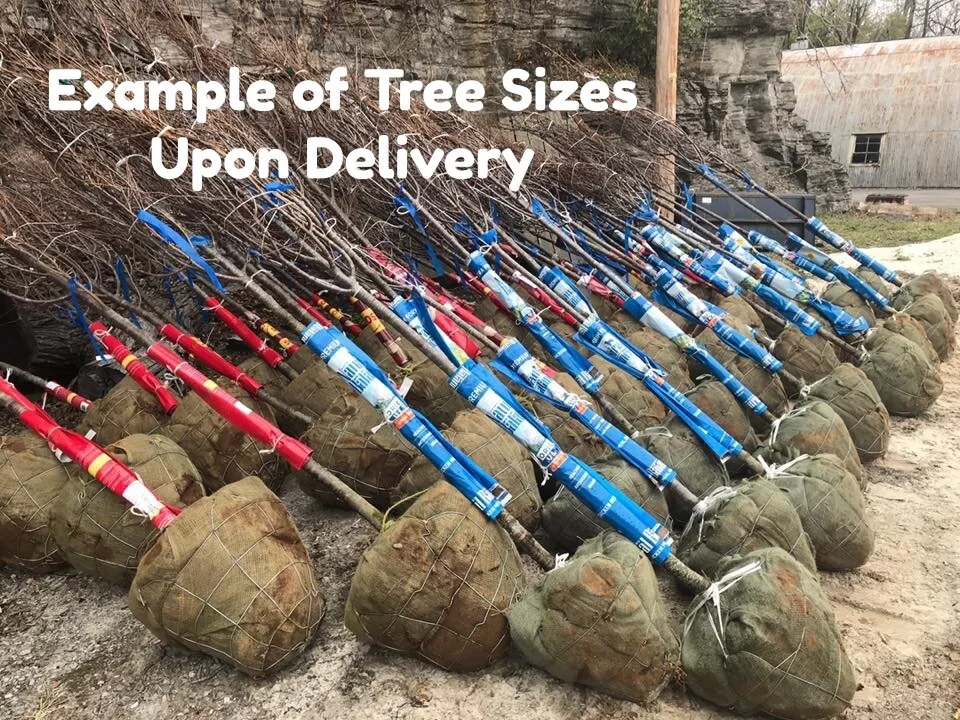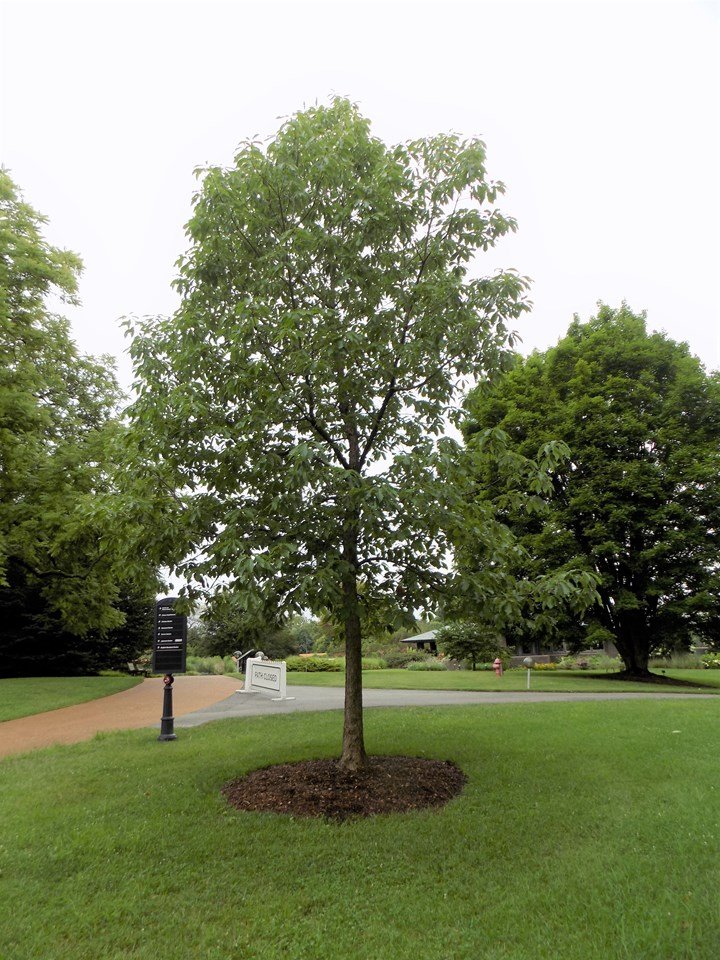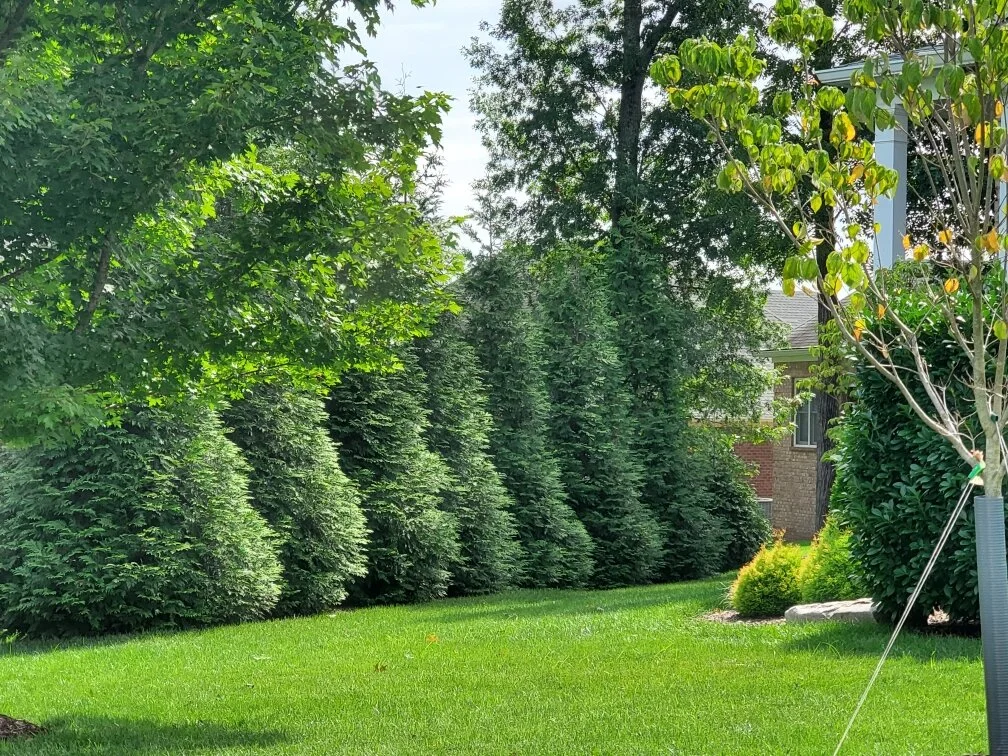Swamp White Oak









Swamp White Oak
LARGE CANOPY TREE; FAST GROWING OAK SPECIES; INTERESTING FALL COLORS; TENDS TO GROW ROUND SHAPE; OAK TREES ARE, IN GENERAL, VERY STRONG TREES.
IMPORTANT NOTE! All oaks will be planted after January 1 to ensure transplant success.
Species: Quercus bicolor
Plant Size, Type & Delivery Height: 1.5” diameter trunk[; Greater than 6 Feet Tall; Balled & Burlap
Ball & Burlap or Potted: Ball & Burlap
Mature Height: 80 feet
Growth Rate: Medium; 12-24”/year
Sunlight: Full Sun
Drought & Heat Tolerant: Yes
Description: This is the kind of oak tree you plant for your enjoyment and the enjoyment of generations to come. White oaks are known for their longevity, so when you plant this tree, you should not only think about how it will look now but how it will be for generations to come. This oak tree will grow to look like what you think of when you think of a big old oak tree, one with an extended large network of branches stretching across your yard and shading entire streets if allowed. Its fall color can be almost a dark purple or sometimes yellow, depending on the climate and moisture level of the fall.
Size Options: We offer size options from 1.5” caliper (diameter) to 3” caliper (diameter) trunk sizes. The 1.5” root ball is feasible for the average healthy homeowner to manage, with a 24” root ball at about 200 lbs. The 3” option, however, has a root ball that is 750+ pounds and so it will cost extra labor and equipment to move. We also include the cost of planting the 3” diameter trees we offer because we don’t want you to risk planting a 750 lbs root ball by yourself. So don’t be shocked by the price of the 3” option; it includes everything delivery & planting. If you want to plant a 750lb root ball yourself, please get in touch with us ahead of time, and we will discuss your plan and discount or refund the $200 tree planting service fee with the 3” option.
Growing Considerations: The swamp white oak prefers not to dry out but can tolerate periods of drought. It adjusts to a broad range of soil types, from loamy alkaline to sandy or clay alkaline soils, but it prefers acidic soil types. It can also grow well in compacted soil, so if you have a new construction home, this tree is probably a good selection for your yard due to construction equipment compaction.
Mono-Culture Risk: None; Not Frequently Planted
Invasive Risk: None










